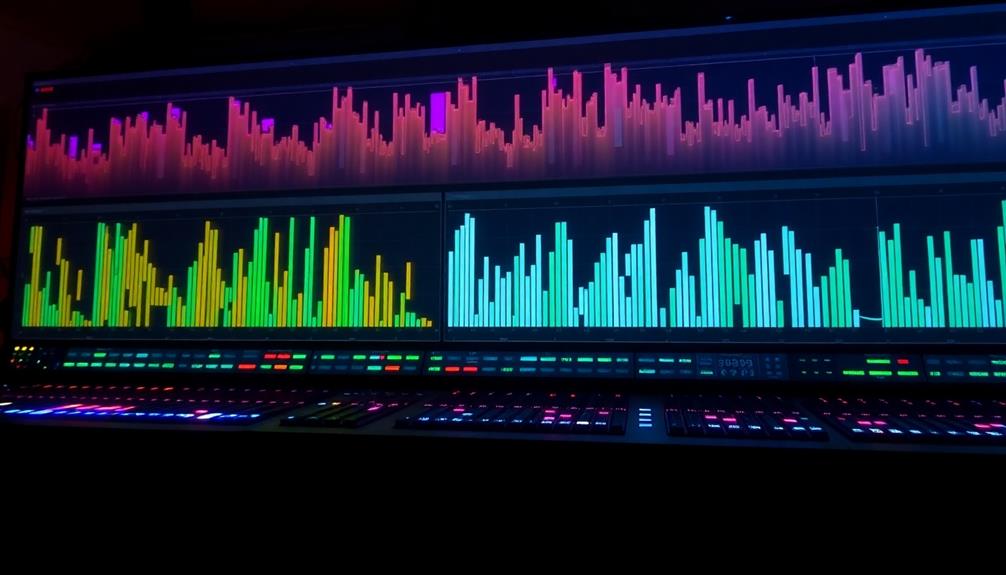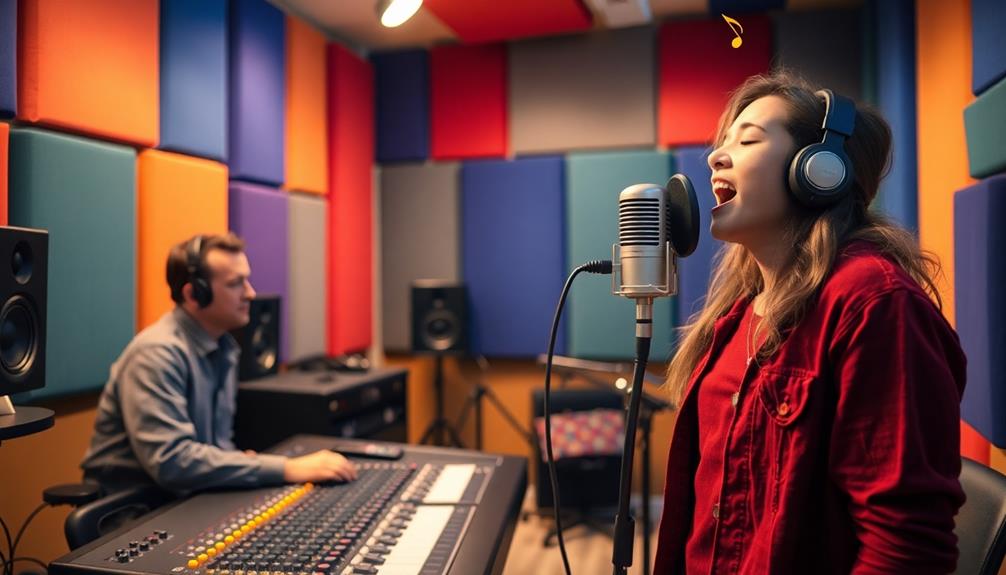To use white noise in your productions, start by selecting a white noise generator in your DAW and create a dedicated track for it. Keep the volume low to fill empty spaces without overwhelming other elements. Experiment with equalization to emphasize specific frequencies and add effects like reverb for depth. Use automation to dynamically adjust volume and panning, creating movement and tension, especially during buildups. Layer white noise under melodic components for unique textures, or incorporate it as a percussive element. Your exploration of these techniques can yield even richer soundscapes and textures that elevate your music.
Key Takeaways
- Use a dedicated track for white noise at low volume to fill empty spaces and enhance overall sound design in your productions.
- Experiment with equalizers to shape white noise, emphasizing or cutting specific frequencies to complement other instruments effectively.
- Automate volume and panning of white noise to create dynamic shifts and movement throughout the track, enhancing engagement.
- Layer white noise with melodic elements for unique textures and richer sound, ensuring it doesn't overpower the main instruments.
- Utilize white noise in buildups by applying frequency automation and effects adjustments for impactful transitions leading to drops.
Understanding White Noise

When it comes to sound design, white noise is an invaluable resource. This random signal includes all frequencies at equal intensity, giving it a sharp quality that can enhance your music production. Think of it like white light, which contains all wavelengths; white noise brings a similar completeness to your mixes.
In music production, you can effectively use white noise to fill empty spaces, making your tracks sound fuller and richer. It's particularly useful for creating smoother shifts between sections, allowing your compositions to flow seamlessly. You'll often find white noise in ambient layering or as a build-up, adding a sense of anticipation in your tracks.
Moreover, white noise can serve as a unique percussive element when combined with effects like reverb or delay. Understanding how to manipulate it through automation and equalization can greatly elevate your sound design.
Benefits of White Noise
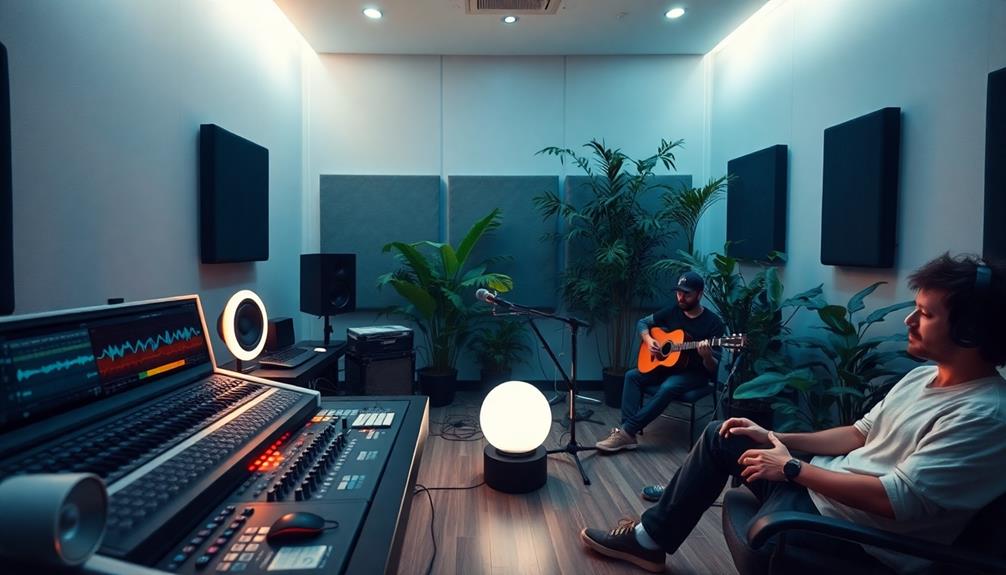
Five key benefits make white noise a must-have in your production toolkit.
First, white noise helps add ambience and a sense of space to your tracks, which creates a fuller sound that enhances the overall listening experience. This richness is essential for engaging your audience.
Second, it effectively fills empty spaces in a mix, allowing for smoother shifts between different sections of a song. This fluidity keeps listeners engaged and makes your productions feel cohesive.
Third, white noise acts as a mixing tool by masking imperfections, like pops and clicks in recordings, giving your final product a more polished sound. You'll appreciate how it elevates your work.
Fourth, by using equalizers, you can shape white noise to emphasize specific frequencies, tailoring its impact to fit the needs of any track. This versatility lets you customize your sound.
Lastly, continuous experimentation with white noise can lead to innovative sound design outcomes. You'll discover how it enriches the texture and complexity of your musical compositions, making your noise in music production stand out.
Embrace these benefits, and watch your productions flourish!
Implementing White Noise
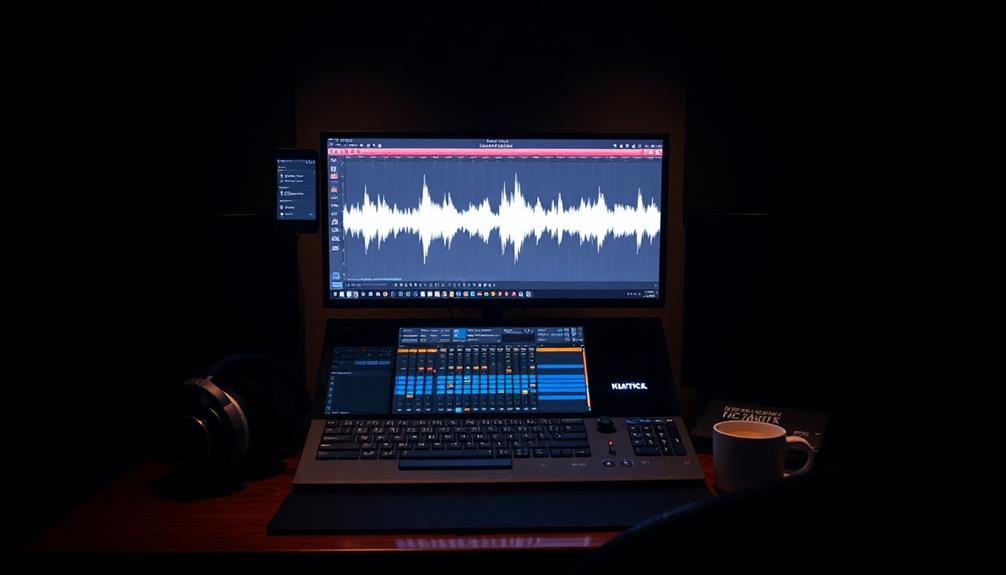
Implementing white noise in your productions can enhance the overall sound and texture of your tracks. Start by selecting a suitable white noise generator from your Digital Audio Workstation (DAW) to create a dedicated track for managing your white noise sample. Keep the volume low to guarantee it blends seamlessly with other elements, enhancing the mix without overpowering it.
Next, use equalizers to shape and emphasize specific frequencies in the white noise. This allows it to fill empty spaces in your mix and adds a rich texture.
Don't hesitate to experiment with effects like reverb, delay, or phaser; these can create unique sonic characteristics and help you build a more immersive soundscape.
To create dynamic shifts throughout your track, utilize automation tools in your DAW. By dynamically adjusting the volume and panning of the white noise, you'll keep listeners engaged and add depth to your production.
Automation Techniques
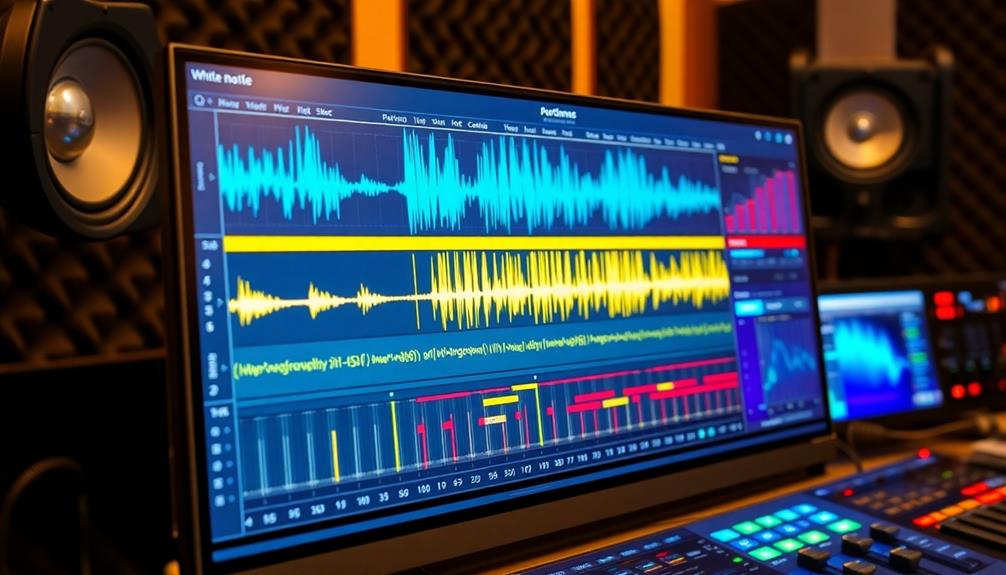
When you're working with white noise, automation can really bring your track to life.
Adjusting the volume and panning dynamically creates depth and movement, while tweaking effects parameters adds texture and interest.
Volume Automation Strategies
Often, using volume automation effectively can transform how white noise interacts with your track. By creating dynamic changes in white noise levels, you can make it swell or recede during different sections, adding drama and interest. For instance, implementing gradual volume increases leading up to a drop can build tension, making white noise serve as a precursor to significant musical events.
Here are some volume automation strategies to take into account:
| Strategy | Description |
|---|---|
| Gradual Swells | Increase white noise volume gradually for impact. |
| Sync with Elements | Automate white noise in sync with drums or vocals. |
| Rapid Automation | Use quick changes for stutter effects or glitches. |
| Visual Manipulation | Utilize automation lanes in your DAW for precision. |
| Layering with Drum Sounds | Enhance drum sounds by automating white noise levels. |
Dynamic Effect Adjustments
Building on the volume automation strategies discussed earlier, dynamic effect adjustments can further enhance the role of white noise in your productions. By utilizing your DAW's automation tools, you can dynamically adjust the volume of white noise throughout your track. This creates a more engaging listening experience that evolves over time.
Additionally, understanding the importance of a well-structured music production workflow can help you implement these dynamic adjustments more effectively music production workflow.
Consider automating filter cutoff frequencies on white noise to generate sweeping effects, adding tension and excitement during buildups or shifts. You can also incorporate automation on effects parameters, like reverb and delay, to give white noise a more dynamic character. This allows its intensity and texture to shift as your song progresses, keeping listeners captivated.
Experiment with automating panning for white noise, allowing it to move across the stereo field. This enhances the spatial qualities of your mix and adds depth.
Additionally, using LFO modulation in conjunction with automation introduces subtle variations in the white noise sound, preventing it from becoming repetitive. By combining these techniques, you can fully exploit the frequency spectrum of white noise, transforming it into a powerful tool that elevates your productions.
Panning for Depth
Panning white noise effectively can greatly enhance the depth and spatial quality of your mix. By utilizing automation tools in your DAW, you can gradually pan white noise from left to right, creating a sense of movement that captivates listeners.
Experiment with different panning speeds and patterns—try slow, sweeping motions or rapid shifts to evoke varying emotional responses.
Layer multiple instances of white noise, each with distinct panning automation, to enhance stereo imaging. This technique makes your sound environment more immersive.
Additionally, consider incorporating sidechain panning automation to introduce a rhythmic feel, allowing the white noise to bounce in and out of the mix alongside other elements.
Don't forget about volume automation; it's essential for dynamically adjusting the presence of white noise throughout the track. This guarantees that the white noise complements rather than overwhelms your other instruments.
By mastering these panning techniques, you can achieve a rich, inviting depth in your productions, transforming your tracks into a more engaging listening experience.
Creative Experimentation
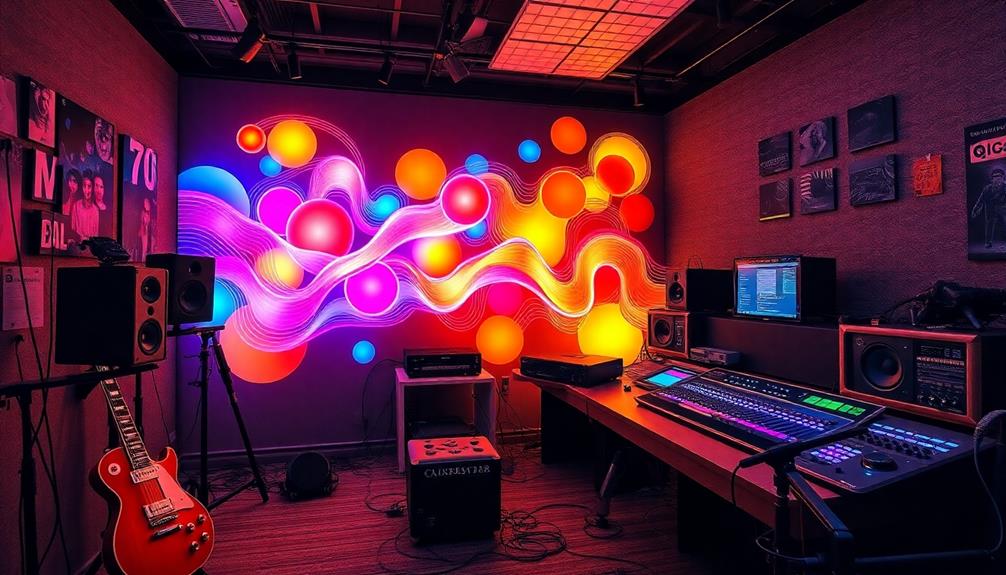
When you start experimenting with white noise, think beyond traditional uses to discover unconventional sound design techniques that can elevate your tracks.
Layering white noise under your melodic elements can create unique textures that fill out your sound.
Don't hesitate to tweak and manipulate these layers; innovation often happens when you push the boundaries of what you know.
Unconventional Sound Design Techniques
In the world of sound design, countless opportunities arise when you embrace unconventional techniques using white noise. Start by layering white noise with various instruments to craft new textures that enhance the depth and richness of your mix. This simple addition can transform a flat sound into something dynamic and engaging.
Utilize automation to adjust the volume and frequency of white noise throughout your track. This keeps the sound evolving, adding an element of surprise. You can also shape white noise with filters and modulation techniques to create special effects like thunder or wind, making your sound design more immersive.
Consider using white noise as a modulation source for unconventional vibrato effects or to influence synth patch parameters. This approach can lead to unexpected sonic results that capture listeners' attention.
Don't forget to explore white noise in rhythmic contexts, such as triggering short samples. Incorporating it into your drum patterns can add complexity and texture, pushing your sound design further.
Layering for Unique Textures
Layering white noise with your musical elements can reveal a world of unique textures that enrich your sound design, much like how personalized learning in classrooms caters to individual styles. By filling in frequency gaps, it enhances the overall texture of your track.
To effectively harness this technique, consider the following steps:
- Experiment with Volume: Adjust the levels of your white noise to guarantee it complements your instruments without overpowering them.
- Use EQ Wisely: Shape the white noise to fit different contexts, emphasizing or cutting frequencies as needed.
- Add Effects: Combine white noise with effects like reverb and delay to add depth and spatial characteristics, making the layers feel immersive.
- Automate Changes: Introduce dynamic shifts by automating volume and panning throughout your track, keeping the listener engaged with evolving soundscapes.
Additionally, don't shy away from mixing various types of noise, like crackle or hiss. This creative experimentation can lead to unique sonic textures that enhance your overall production.
Buildups With White Noise
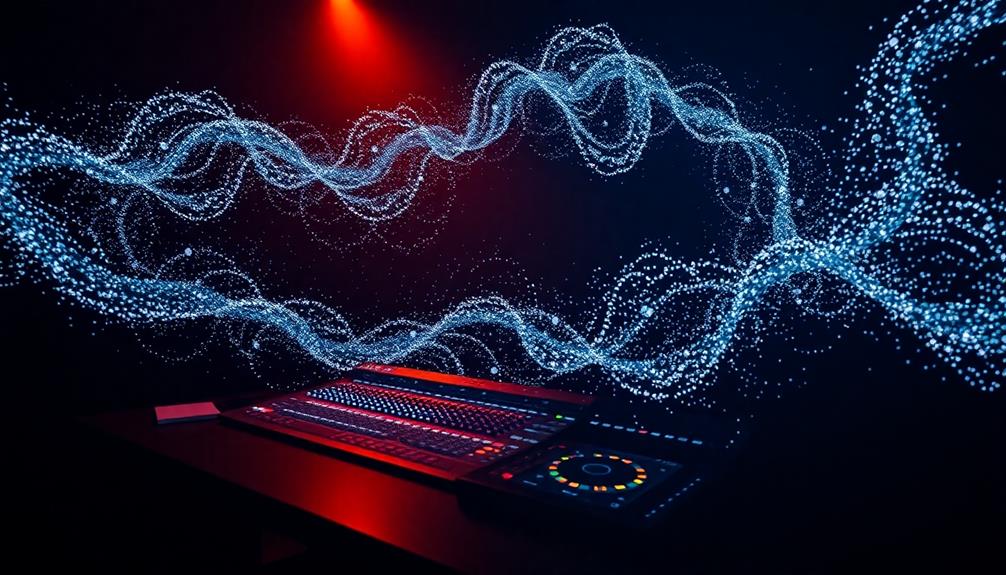
Buildups with white noise can effectively heighten tension and anticipation in your track. To create impactful buildups, start by using a synthesizer like Operator in Ableton. This allows you to generate the white noise, seamlessly integrating it into your music. Loop a single note while applying frequency automation to create a rising effect that builds excitement leading into a drop or new section.
Adjust the effects parameters, such as increasing the resonance on the filter applied to the white noise. This gives the buildup a fuller body and a sweeping sound that grabs listeners' attention.
Don't hesitate to experiment with LFO modulation for dynamic panning and volume variations, which can add depth and interest to your buildup.
Layer white noise with additional elements like rhythmic percussion or synth stabs to enhance your track further. This combination will create a richer and more engaging buildup experience, ensuring your audience feels the anticipation before the big moment arrives.
Ambient Layering Techniques
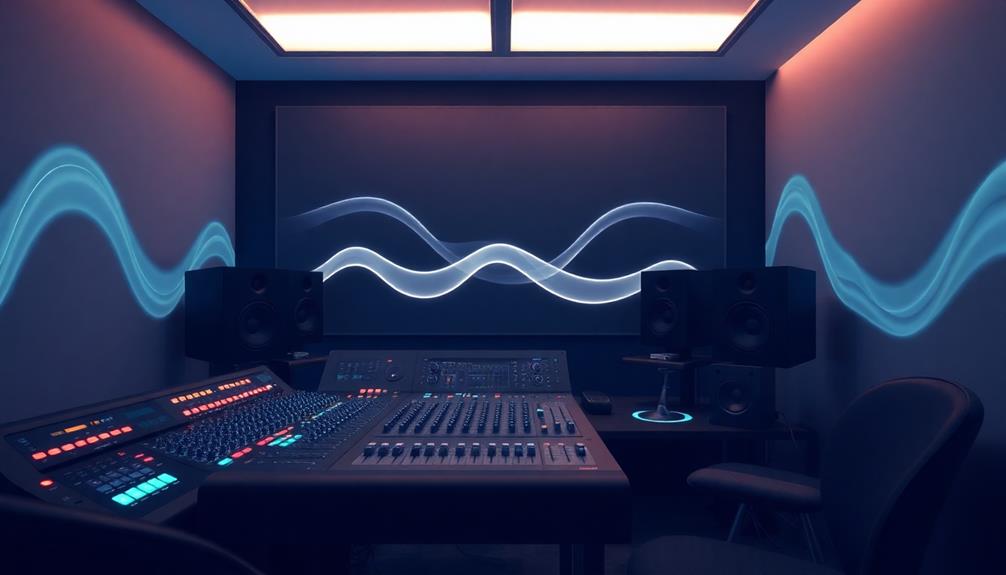
Using white noise in ambient layering can transform your soundscapes dramatically. This versatile tool in music fills the frequency spectrum and enhances the overall sense of space in your mix.
Here are some effective ambient layering techniques you can apply with white noise:
- Layer with Instruments: Use tools like Ableton's Operator or Simpler to blend white noise with other instruments at a low volume, ensuring it complements rather than overwhelms your mix.
- Add Reverb: Incorporating light reverb on your white noise smooths its texture, creating a more cohesive ambient sound layer that feels enveloping.
- Automate Dynamics: Experiment with automating the volume or panning of the white noise. This introduces dynamic changes, keeping the ambient layer engaging and alive throughout your track.
- Use Arpeggiators: Pairing white noise with arpeggiators can add movement and complexity to your sound, enriching the atmosphere of your ambient layer.
Percussive Sound Design
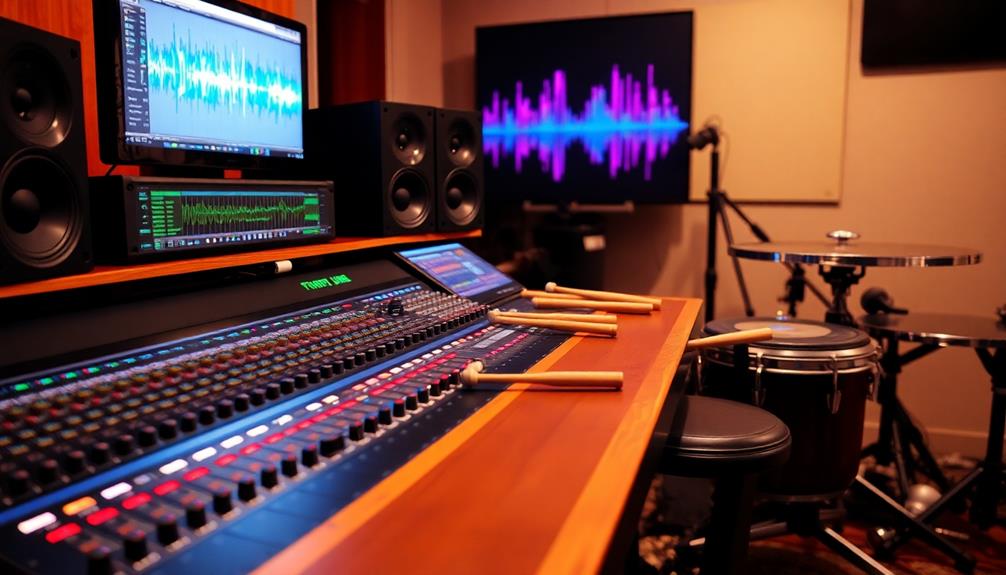
Incorporating white noise into your percussive sound design can elevate your tracks by adding unique textures and depth. By using short white noise samples triggered by MIDI sequences, you can create percussive elements that intrigue your listeners. Don't forget to experiment with ADSR (Attack, Decay, Sustain, Release) controls to sculpt the amplitude envelope of the noise, resulting in crisp snare-like sounds or softer, airy percussions.
Here's a quick overview of techniques to enhance your white noise percussive design:
| Technique | Description |
|---|---|
| Layering | Combine white noise with existing drum sounds to enhance fullness. |
| Distortion/Bitcrushing | Use tools like Trash 2 to introduce grit and character. |
| Modulation Techniques | Implement LFO or filter sweeps for evolving percussive sounds. |
| ADSR Shaping | Adjust the envelope to create varied snare-like or soft sounds. |
Unique Sound Applications
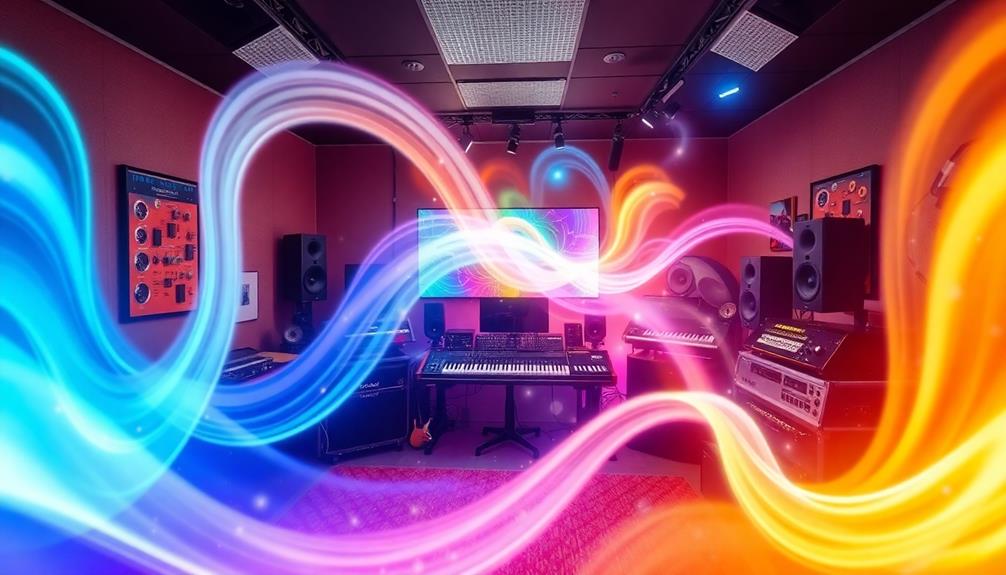
While many producers might focus solely on melodic elements, white noise offers a versatile palette for creating unique sound applications that can elevate your tracks.
You can use white noise to create exciting shifts, enrich your mix, and enhance sound design in various ways:
- Dynamic Noise Sweeps: Modulate filter cutoffs to create impactful whooshes that build anticipation and excitement in your electronic dance music.
- Noise as a Background: Layer white noise textures to fill the stereo field, allowing primary melodies or vocals to shine while providing an immersive listening experience.
- Vibrato Effects: Use white noise as a modulation source, filtering it to creatively modulate pitch and filter cutoff, adding high resonance to your sound design.
- Realistic Drum Sounds: Synthesize drums with white noise to craft authentic hi-hats and snares, employing tight volume envelopes for a polished finish.
Frequently Asked Questions
How Do You Use White Noise Effectively?
You can use white noise effectively by blending it into your mix at a low volume, shaping its frequencies with EQ, and adding effects like reverb for texture. Experiment to find what enhances your sound best.
Does White Noise Make You Productive?
Yes, white noise can boost your productivity. It masks distractions and creates a calming environment, helping you focus better. Many find that it enhances concentration, making tasks easier and reducing mental fatigue during work sessions.
How to Use White Noise in Music?
Ever wondered how to elevate your music? You can use white noise to fill gaps, enhance depth, and layer sounds. Experiment with volume, panning, and effects to create a unique auditory experience in your tracks.
What Is White Noise in Audio Production?
White noise in audio production is a sound that contains all frequencies at equal intensity. You can use it to enhance your mixes, fill gaps, and mask imperfections, creating a fuller, more textured sound experience.
Conclusion
Incorporating white noise into your productions can be a game changer, adding texture and depth that transforms your sound landscape. Like a painter who adds a splash of color to a canvas, you can use white noise to enhance your tracks, from buildups to ambient layers. So don't hesitate—experiment boldly and let your creativity flow. With each twist and turn, you'll discover new dimensions in your music that elevate your productions to a whole new level.




